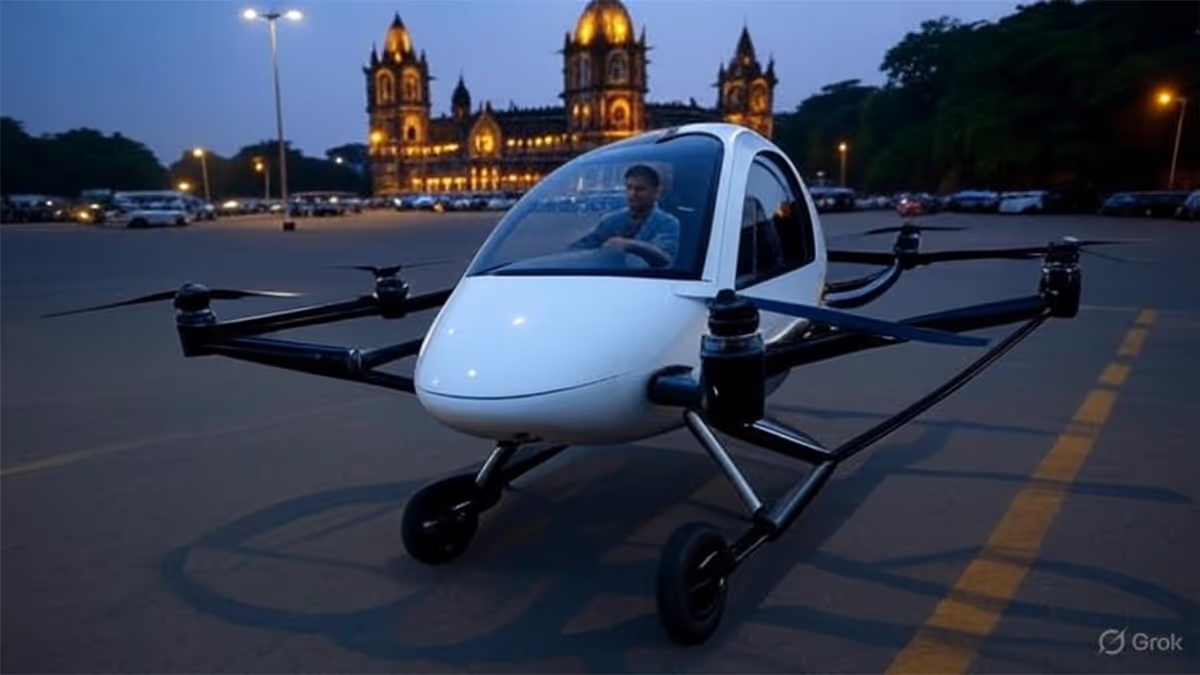Top 5 personal aerial vehicles almost ready for you to fly

Humans have always been fascinated by the power of flight… always. From Leonardo Da Vinci’s visionary concepts of the ornithopter and the aerial screw back in the 16th century, to George Cayley’s (father of aeronautics) human-carrying glider in 1853, and finally, the Wright Brothers’ Flyer in 1903, we’ve come a long way when it comes to taking to the air.
In the last couple of decades, though, the dream of ‘personal flight’ has been a massive work in progress with ambitious prototypes creating an online buzz. The landscape is rapidly shifting in 2025. The advances in electric propulsion, lightweight materials, futuristic autonomous flight systems, and personal aerial vehicles (PAVs) are being transitioned from experimental novelties to viable transportation solutions.
We’ve got flying bikes and cars, as well as jet suits (not too far a leap from science fiction), and a whole new era of mobility that is taking shape — one that could redefine how we commute, explore, work, and respond to emergencies.
Here are five such mobility advancements that have recently been making headlines and could forever change the way we travel.
1. Jetson ONE
Jetson’s ONE is a single-seat electric vertical takeoff and landing (eVTOL) aircraft designed for recreational pilots. Weighing just 86kgs, it’s classified as an ultralight vehicle in many countries, meaning it can be flown without a pilot’s license. The aircraft features eight electric motors, a race-car-inspired safety cell, featuring eight electric motors, and can reach speeds up to 101kmph (55 knots). It also boasts safety features like motor redundancy and an auto-landing system. This personal micro-aircraft even comes complete with one-handed controls and, like a drone, auto-landing and hover capabilities to make it easier to pilot.
The company envisions the ONE as a “Formula One car for the sky,” offering an exhilarating yet accessible flying experience. Expected delivery is sometime in 2027, for those who have pre-booked their vehicles for $8,000 (paid now). The total cost of the ONE is $128,000 (roughly ₹1,09,32,716).
2. Volonaut Airbike
Unveiled in May 2025, the Volonaut Airbike is a jet-powered flying motorcycle developed by Polish inventor Tomasz Patan, who also happens to be known for creating the Jetson ONE. This single-seat vehicle can reportedly reach speeds up to 200kmph using its jet propulsion systems. It features quite a minimalist style with an open-air design (no visible propellers), allowing for 360-degree visibility and agile manoeuvrability. Constructed from carbon fibre and 3D-printed components, the Airbike is seven times lighter than a conventional motorcycle. It employs a proprietary stabilisation system for automatic hovering and intuitive control, making piloting easy, without much training.
Currently in its prototype stage, the Volonaut Airbike, dubbed the “superbike for the skies,” has already demonstrated successful flights across various terrains, signalling a significant step forward in personal aerial mobility.
3. SkySurfer PRO v2.0
The SkySurfer PRO v2.0 is a compact eVTOL aircraft developed by Hunter Kowal, the founder of SkySurfer Aircraft Inc.. Primarily designed for personal use, it features a foldable design that allows it to be transported as luggage, making it the world's smallest manned aircraft. The SkySurfer PRO v2.0 incorporates proprietary airflow technology, military-grade safety features, and an autopilot system with one-inch positional accuracy. Its intuitive single-hand controller ensures ease of operation, even for users without pilot training.
The SkySurfer has been getting quite a bit of attention, with Kowal making frequent videos of his adventures across multiple terrains and taking the aircraft to its limits. It was even featured in Marvel's "Spider-Man: No Way Home" and the World Games opening ceremonies.
4. Gravity Industries’ Jet Suit
If modern cinema and pop culture have any impact on our lives, then nothing has been more fascinating than a flying suit. What Gravity Industries (founded by Richard Browning) has developed isn’t even an entire suit that’s worn, not in the most conventional sense. It’s something more akin to a jetpack with five micro gas turbines on your hands to control direction.
The ‘suit’ can reach speeds of up to 80mph and altitudes of 12,000 feet, offering unprecedented mobility. So far, Gravity’s design has been used in a variety of demonstrations and has also been tested by the military, where the potential is immense.
The company has conducted trials with emergency services as well, displaying the suit’s potential for rapid response in challenging environments. Gravity’s jet suit even made an appearance at a recent tech summit in Bengaluru this year.
For $3,500 (around ₹3,06,000), you could experience this flying marvel for yourself, depending on which part of the world you’re in.
5. XPeng AeroHT
The first-ever Land Aircraft Carrier, as it’s being called, is just about the most innovative hybrid vehicle that has been conceptualised so far. It’s a combination of a rugged six-wheeled electric truck (think Tesla Cybertruck when it comes to design) with a detachable two-seat flying car loaded into the “boot.” The electric truck offers up to 1,000km of driving range and strong off-road capabilities, while the eVTOL aircraft, which tucks away neatly into the truck’s rear, can be deployed in just a few minutes for flights up to 40km. The aircraft can reach speeds of up to 130kmph and features automated folding rotors, one-touch takeoff and landing like a drone, and even autonomous navigation. Unveiled in 2024, XPeng plans to begin mass production in 2026.
Real-world applications of personal aerial vehicles
In the real world, personal aerial vehicles are going to revolutionise multiple sectors, going well beyond the thrill of flight. eVTOLs such as the SkyDrive SD-05 offer the promise of reduced road congestion by taking commuters to the air via aerial taxi services. This would be especially transformative in densely populated cities with infrastructure bottlenecks and overburdened transit systems.
Other sectors that would benefit from personal aerial flight solutions would include:
- Emergency response services where jet suits and compact eVTOL aircraft are already being tested for rapid deployment of medical personnel in hard-to-reach or disaster-stricken areas.
- Military operation flight suits can offer new tactical possibilities, where special forces can manoeuvre swiftly across complex terrains and scale obstacles, with greater endurance and stealth.
- The recreational space is also expanding with the introduction of lightweight, user-friendly aerial vehicles like the Jetson ONE, offering an entirely new frontier for adventure, exploration, and personal mobility.
Transportation history is once again seeing a dynamic shift with the coming of personal aerial vehicles. Of course, there are still many challenges to overcome, such as regulatory hurdles, safety concerns, and infrastructure development. However, progress is being made, and it is a clear indication of a promising future. As technology continues to move forward, or in this case, upward, the dream of personal flight is no longer a science-fiction fantasy but an emerging reality, and it will transform how we move through our world.






